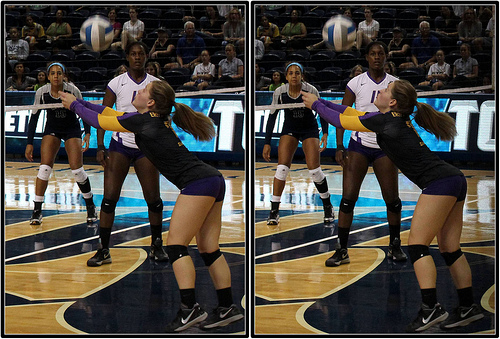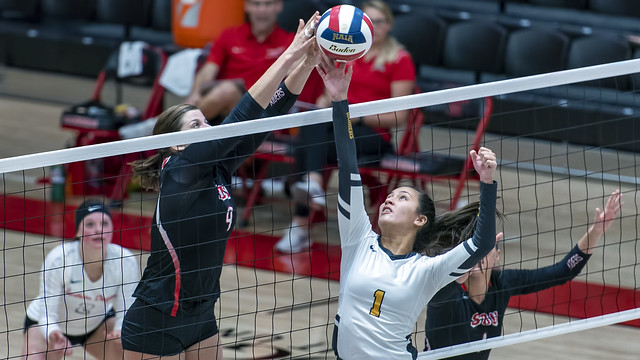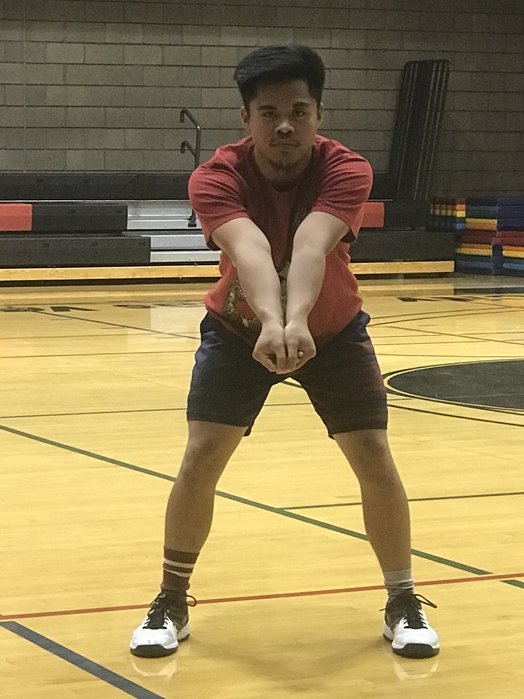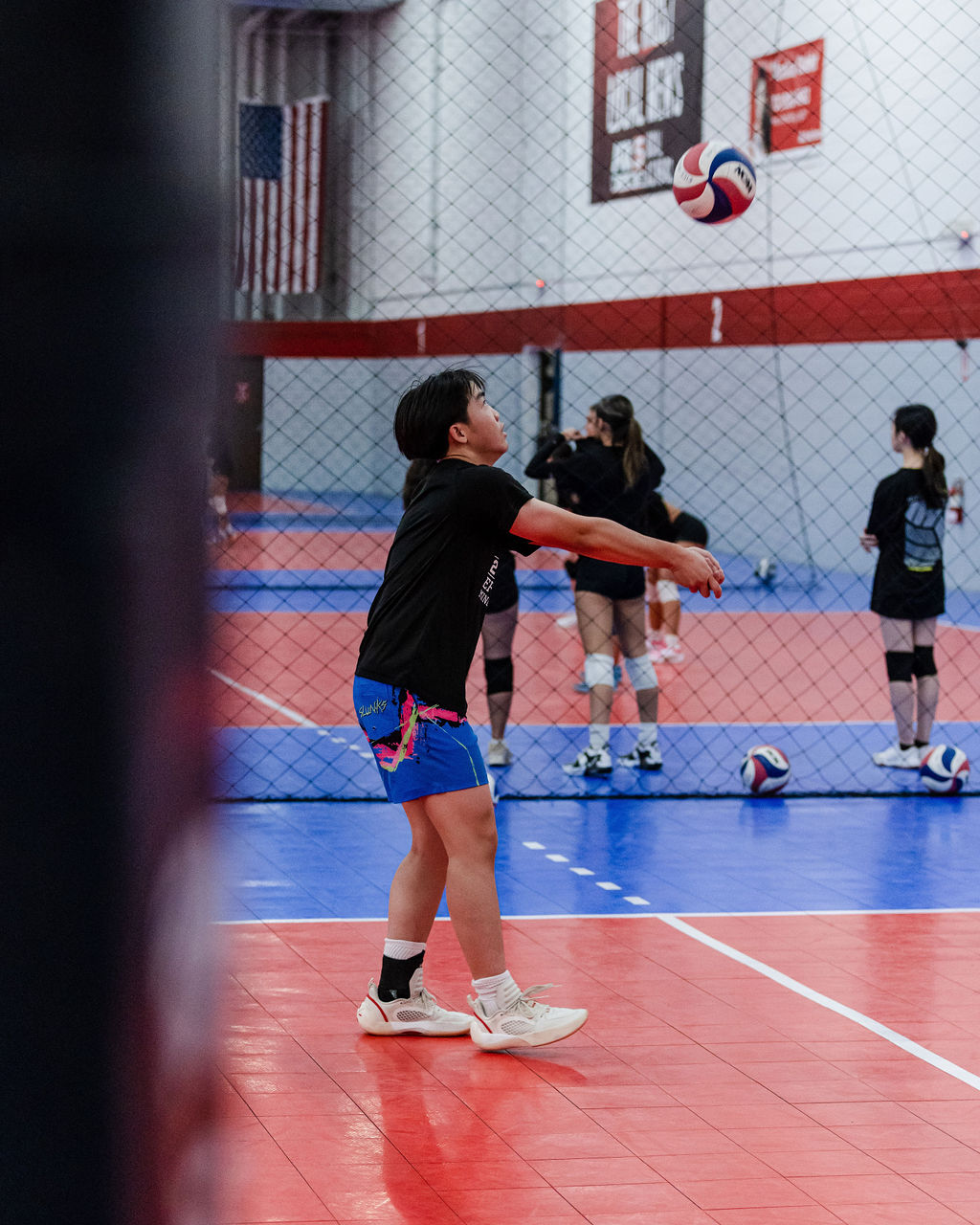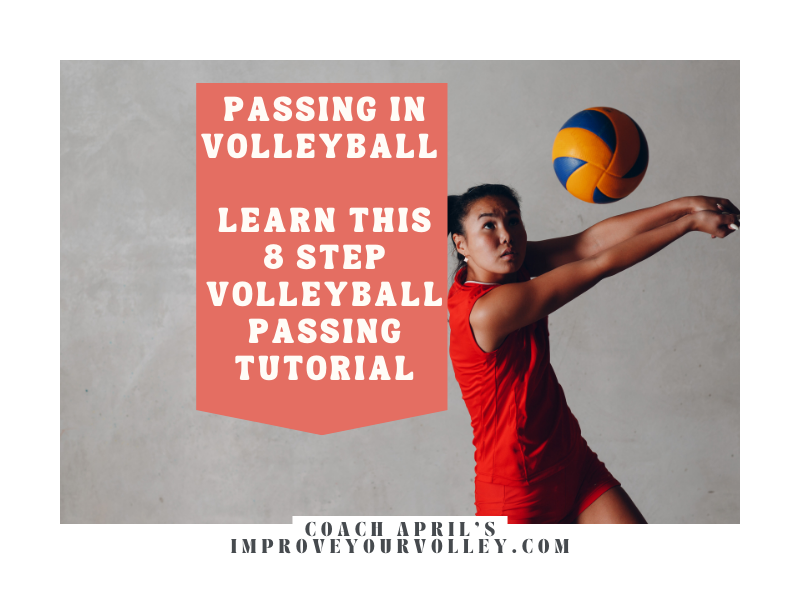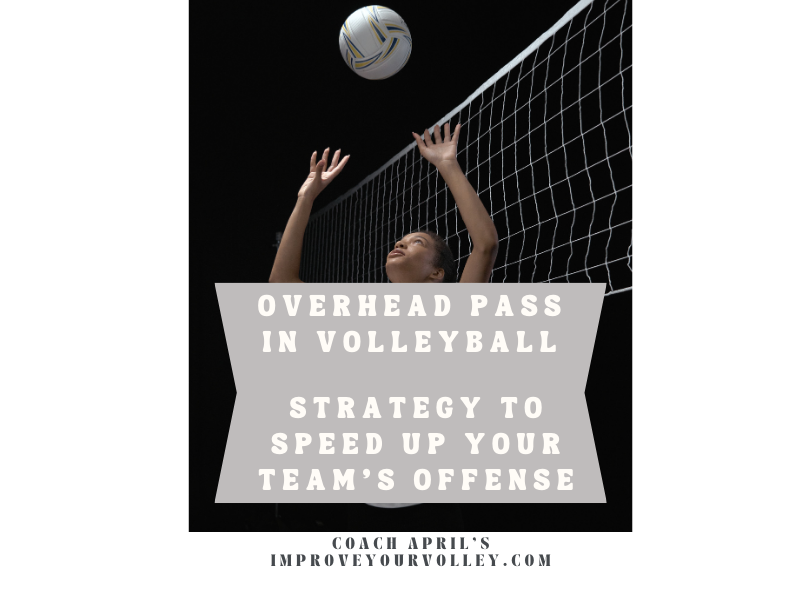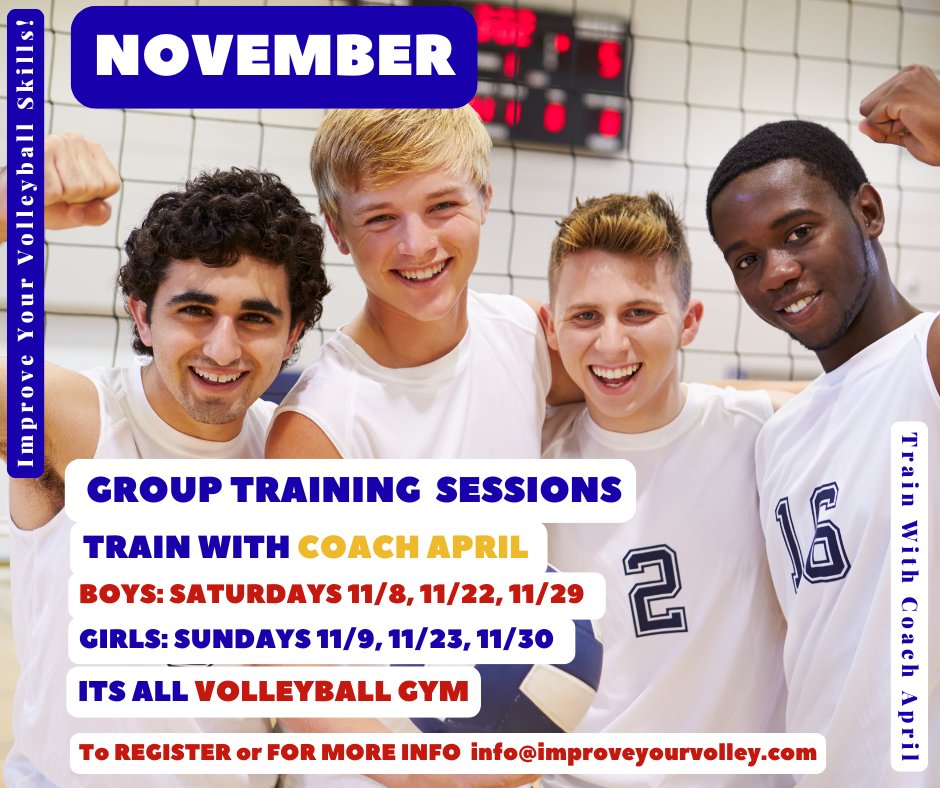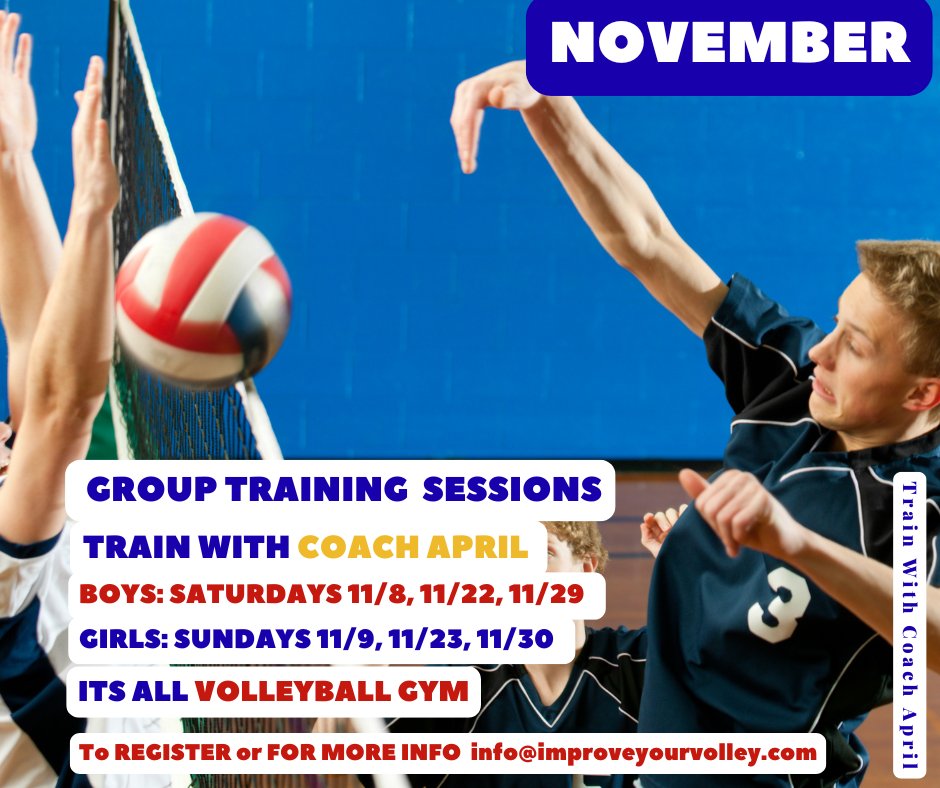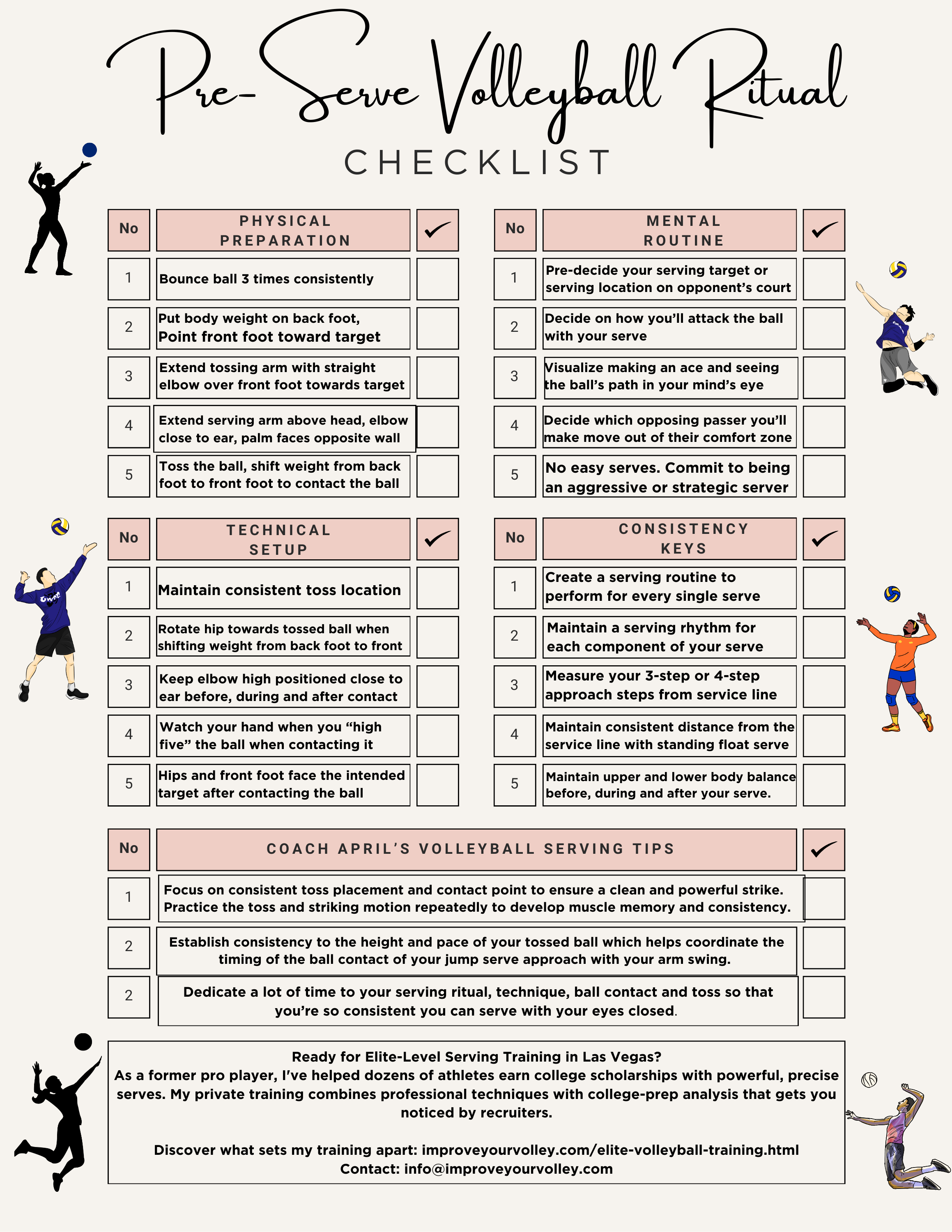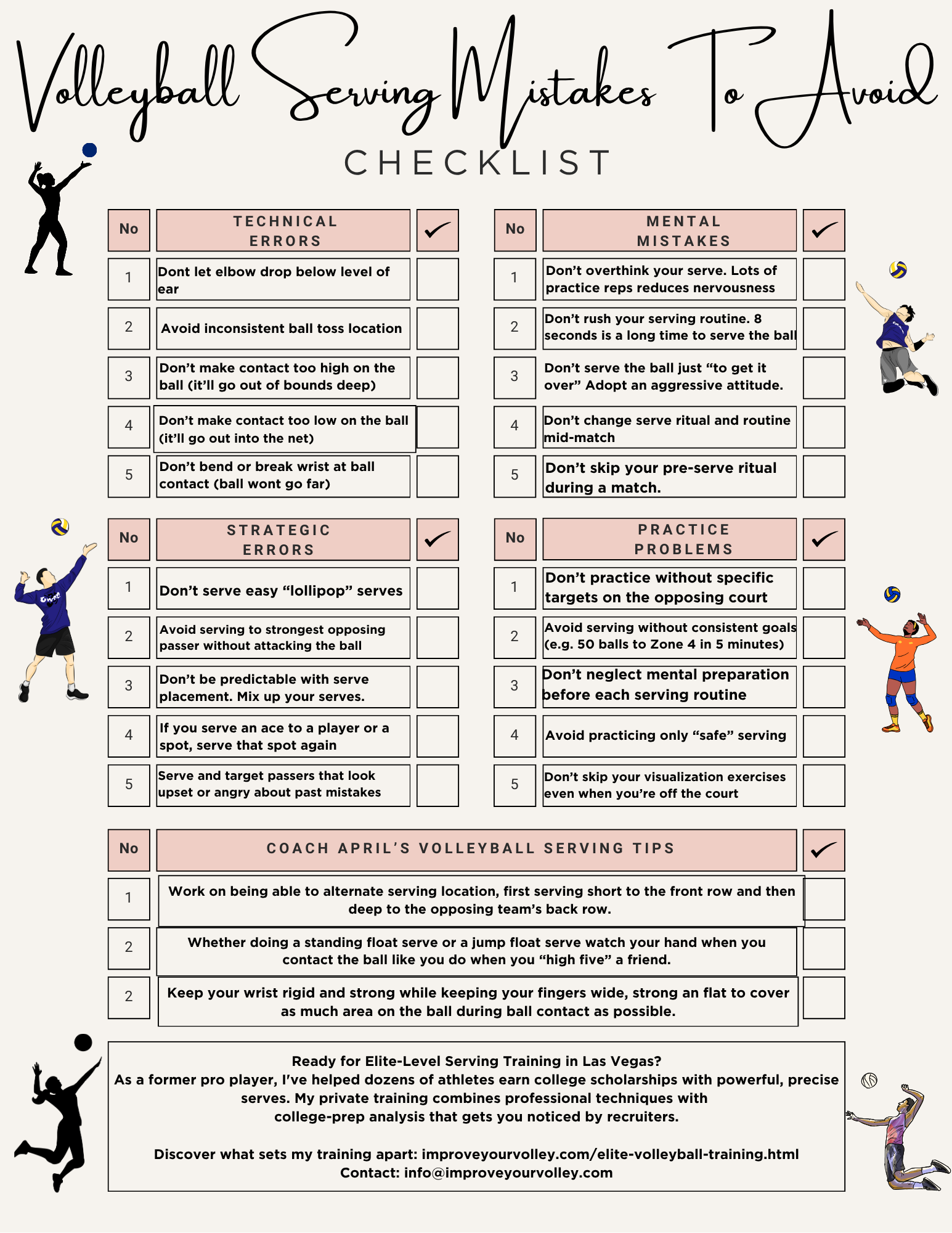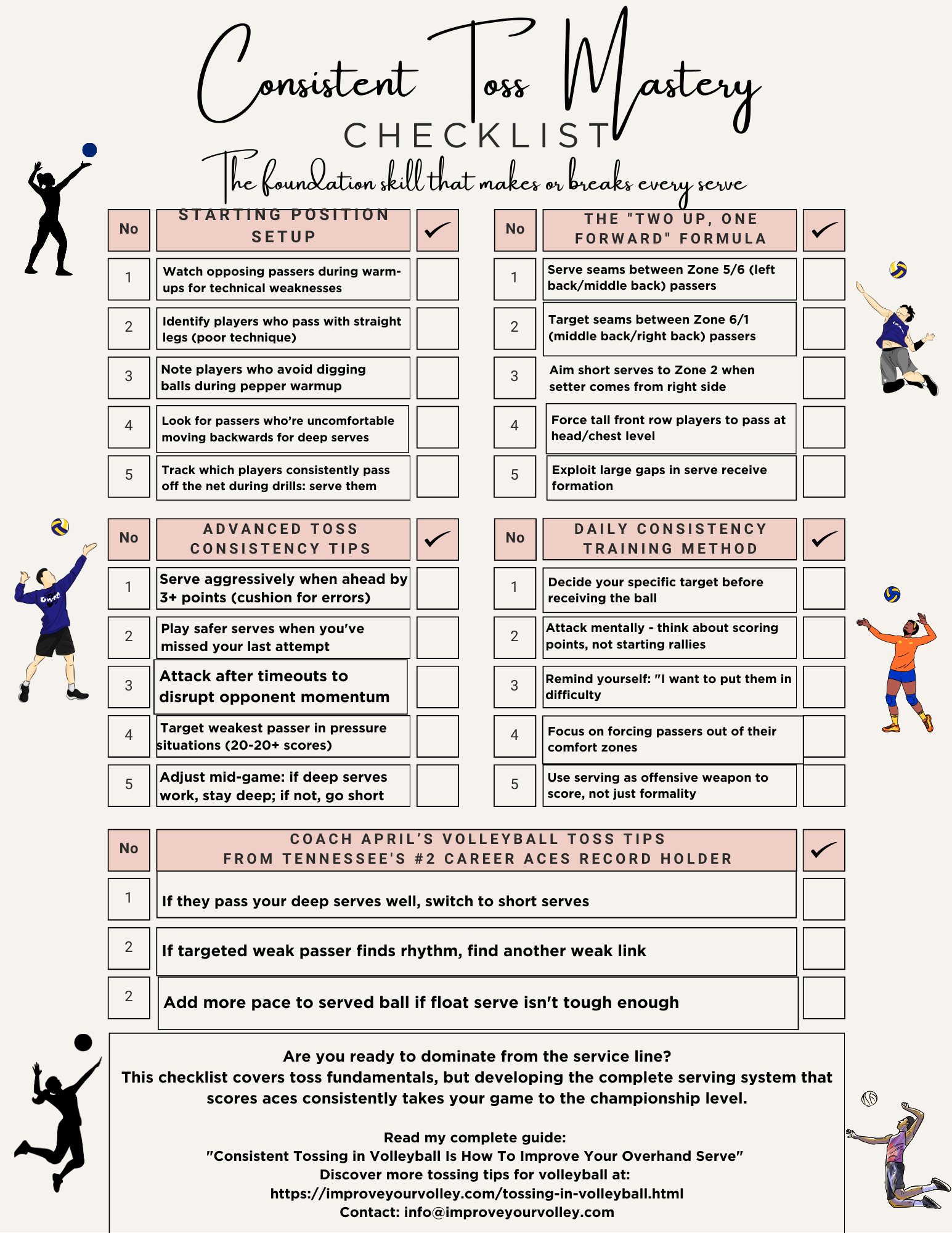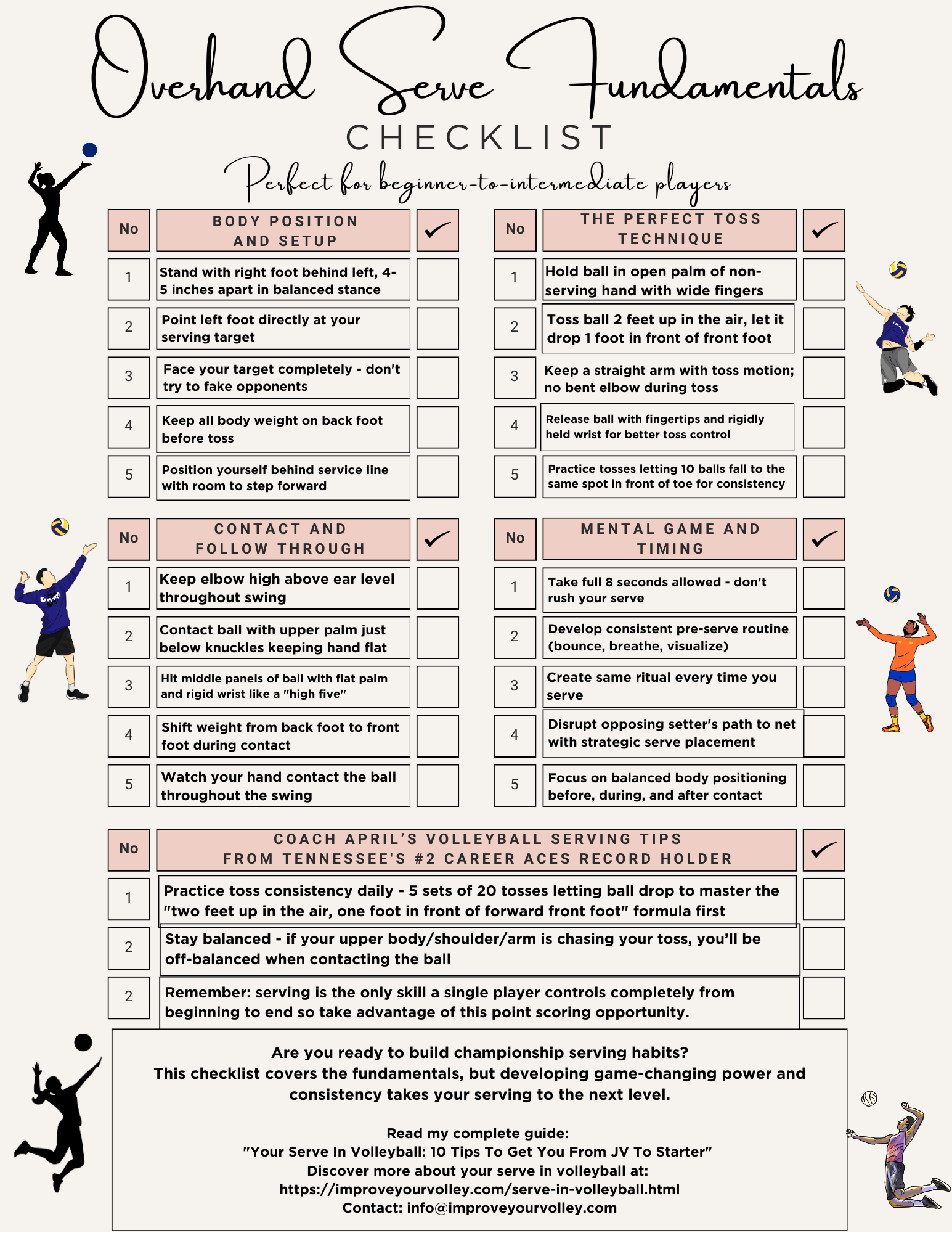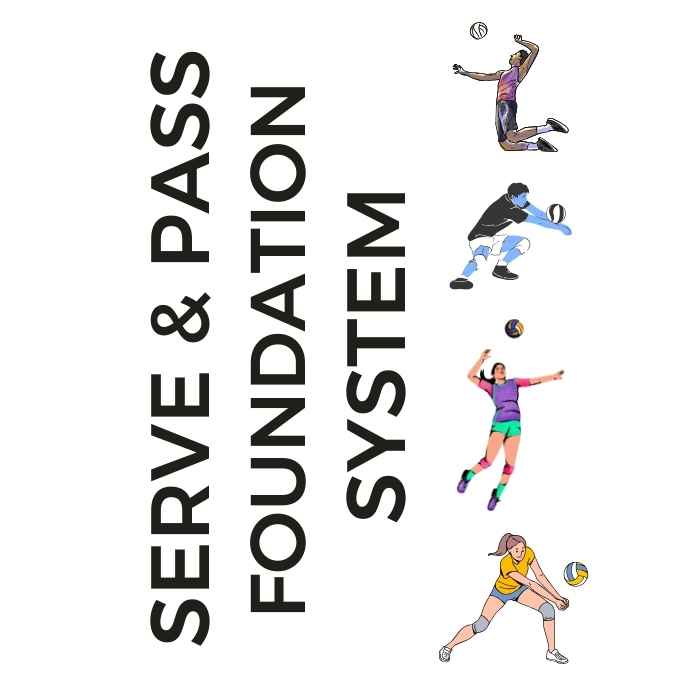
Serve + Pass Foundation System: The Complete Skills Arsenal The two-skill mastery system that transforms inconsistent players into the athletes coaches build their lineups around. Stop Struggling With The Two Most Important Skills In Volleyball!
- Improve Your Volleyball with Coach April
- Words Used in Volleyball
- A Pass In Volleyball A Shank, Overpass, Passing Dimes
What Do You Call A Pass In Volleyball
A Shank, Overpass, Passing Dimes
The shank, the overpass, a reception error and passing dimes are what you call a pass in volleyball depending on how well you contact the ball in serve receive.
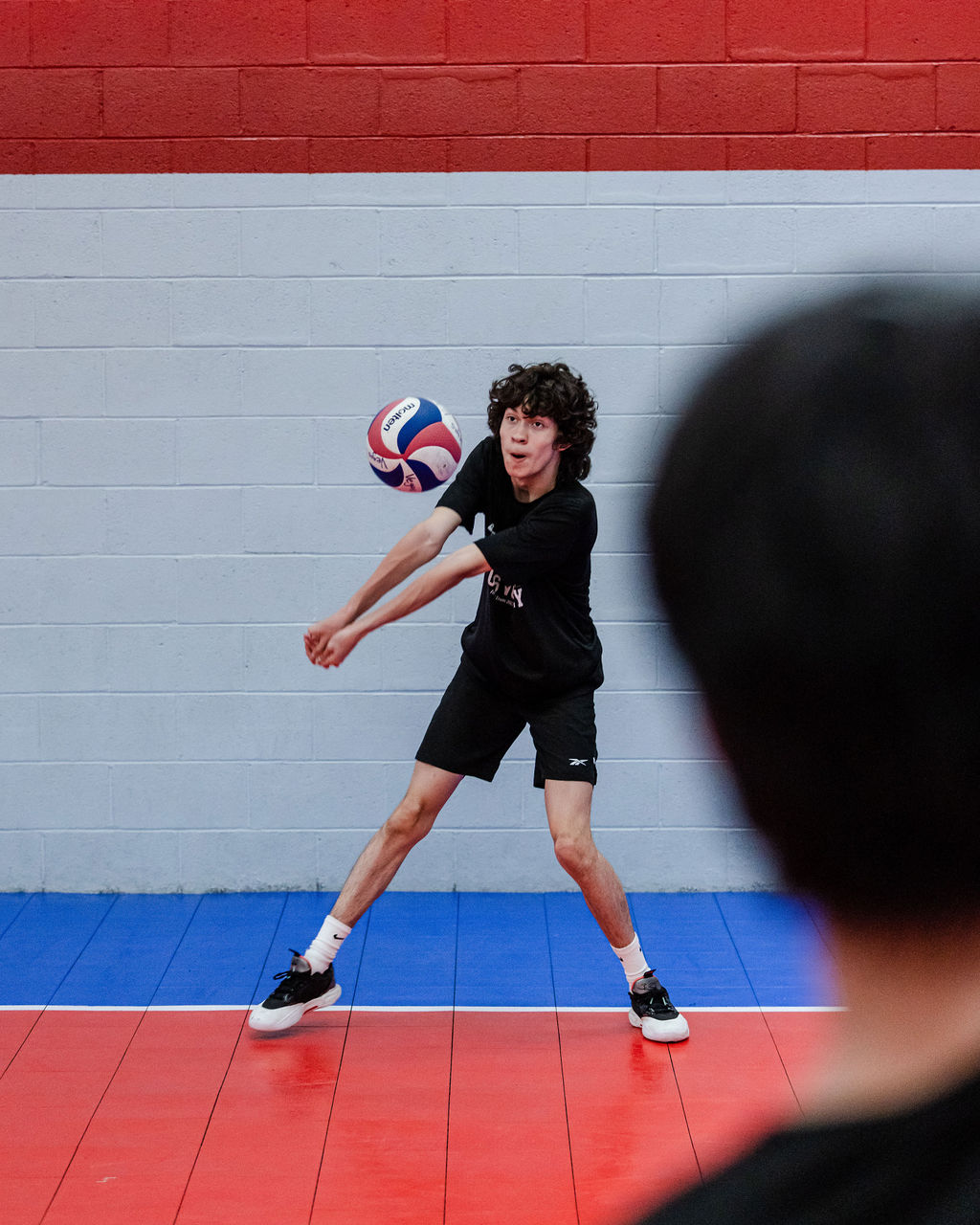 Do you know what a pass in volleyball is?
A pass is the way to transfer the ball from one place to another on a court by contacting the ball so it travels from one player to another player or from one player over the net.
Do you know what a pass in volleyball is?
A pass is the way to transfer the ball from one place to another on a court by contacting the ball so it travels from one player to another player or from one player over the net.Did you know that certain passing errors have special volleyball slang terms and names?
A Pass in Volleyball
What is a "shank" in volleyball?
To a normal person, using everyday language a shank has three possible meanings:
a) it could be a sharp object used to stab something
b) the lower part of a person's legs usually describing the knee to the ankle
If you shank the ball after being served, your angled platform arms sends the ball in a direction you weren't even aiming for.
A Pass in Volleyball
What is an "overpass" in volleyball?
Can you pass two balls at a time? This is a passing drill which forces you to pass the ball right to the target because if you overpass the ball your passing partner will probably have to stop the drill.
In normal everyday language an overpass is the bridge road cars drive on to cross over a river, a railroad or a freeway.
An overpass is one of the most common volleyball passing errors that beginner players make.
They occur when you have
- a) applied too much swinging movement during the pass with your shoulders
- b) applied too much movement with your platform or pass with bent elbows instead of straight arms
- c) don't get your feet stopped when contacting the ball to pass
it, so the forward movement of your body helps propel the ball over the net instead of to its intended target, your setter.
Teams and players spend hours in practice trying to improve their passing technique especially when faced with high speed serves from the opposing team.
The goal of this passing volleyball drill is to reduce or eliminate the chances of committing volleyball passing errors like an overpass during a game.
Because when it occurs its easy for the other team to score a direct point by just blocking or hitting the ball back into your court.
This action usually happens so fast that the team that committed the overpass, doesn't have time to get set up in defense, so the overpass has forced them into a situation that's extremely hard to defend against.
A Pass in Volleyball
What is a "reception error" in volleyball?
Finally!
One of the few names for a pass in volleyball that actually is not a volleyball slang term.
If your team keeps stats while they play, then whenever a player on your team is unable to receive serve that results in the ball going to the setter or another player, then that player gets "credited" on the volleyball stat sheet for a reception error.
Okay let's make it simple.
A Pass in Volleyball
What does "passing dimes" in volleyball?
Passing dimes, or setting dimes means you are passing or setting balls right to the intended target!
So yes, this actually is a good thing!
If a player uses the word 'dime" for example in a phrase like "She passed the ball on a dime" then they are describing a situation where you made a perfect forearm pass or bumped the ball right to the intended target.
I like to work on this 3 person "Dodgeball" drill where the person in the middle has to choose which side to get their midsection out of the way of the oncoming ball that's being tossed at their chest before they present their passing platform with an angled shoulder positioned towards the target.
In almost all cases the target is the setter, or the setter's hands if she's on the move or to the setter's area if she's coming from her starting position in serve receive.
Basically, its the latest, greatest coolest way of complimenting someone for making a perfect pass!
Frequently Asked Questions about the Volleyball Forearm Pass
Q: What is a forearm pass in volleyball?
A: The forearm pass, also known as a bump or pass, is a fundamental skill in volleyball used to receive an opponent's serve or pass the ball to a teammate.
It involves using the forearms to control and direct the ball to the desired target.
I like to work on this 3 person "Dodgeball" drill where the person in the middle has to choose which side to get their midsection out of the way of the oncoming ball that's being tossed at their chest before they present their passing platform with an angled shoulder positioned towards the target.
Q: How do I improve my forearm pass in volleyball?
A: Here are some tips to improve your forearm pass:
1. Keep your elbows straight to create a flat platform.
2. Track the ball from the server's hands to anticipate its path.
3. Keep your arms together when contacting the ball.
4. Keep both feet on the ground for better stability.
5. Quickly position yourself behind the ball with proper footwork.
Q: How important is forearm pass in volleyball?
A: The forearm pass is an essential skill in volleyball as it is often the first contact when receiving the opponent's serve.
A good forearm pass sets up the team's offensive play, allowing for better control and accuracy in setting up attacks. It is crucial for maintaining ball control and initiating successful plays.
Q: What equipment can help improve forearm passing?
A: Volleyball forearm passing sleeves are popular accessories used by players to protect their wrists, forearms, and elbows during passing and digging.
Brands like Mizuno and Nike offer volleyball passing sleeves (ad) that can enhance comfort and support while practicing or playing.
Q: Can I practice forearm passing on my own?
A: Yes, you can practice forearm passing on your own. You can perform passing drills against a wall, focusing on technique and accuracy.
Another option is to recruit a partner to practice passing back and forth, simulating game-like situations. Consistent practice and repetition will help improve your forearm passing skills.
Here are some volleyball drills for youth that you can do at home or in practice with a friend or teammate you are working out with at home or on their own or even during an open gym at your school.
Watch as Kenny and Jaylen work on controlling the ball to a consistent spot on the wall and then control the ball to themselves, then finally they control the ball to each other...repeatedly.
Q: Are there any specific drills I can do to improve my forearm passing?
A: Yes, here are a few drills you can try:
Stand facing a wall and practice passing the ball against it. This helps improve technique and control.
2. Triangle Drill:
Set up three cones in a triangle shape and practice moving quickly between them while passing a ball. This improves footwork and positioning.
3. Pass and Move:
Set up a designated area and practice passing the ball with a partner while moving around. This simulates game-like movement and improves passing accuracy under different conditions.
Q: What should I do if I struggle with forearm passing accuracy?
A: To improve your forearm passing accuracy, focus on the following:
1. Proper hand contact:
Make sure to contact the ball with the forearms, slightly above the wrists, creating a solid platform.
2. Eye on the ball:
Keep your eyes on the ball as you pass it, maintaining visual contact throughout the entire process.
3. Controlled body position:
Maintain a balanced and athletic stance with your feet shoulder-width apart, knees slightly bent, and weight forward.
Q: How can I generate more power in my forearm pass?
A: To generate more power in your forearm pass, consider the following techniques:
1. Use your legs:
Engage the muscles in your legs and core to generate power from the ground up. Bend your knees and use a slight upward thrust to add strength to your pass.
2. Follow-through:
After making contact with the ball, continue your arm extension forward and slightly upward. This follow-through motion adds power and accuracy to your pass.
3. Timing and anticipation:
Anticipate the ball's trajectory and aim to meet it at the highest point of its arc for maximum power.
Q: What should I do if the ball is coming at me too fast for a forearm pass?
A: If the ball is coming at you too fast for a forearm pass, you can use an alternative technique called the overhead pass or "volley." In this method, you use your fingertips to guide the ball, creating a controlled trajectory. However, mastering forearm passing should still be a priority, as it is the most effective and commonly used pass in volleyball.
Q: How can I develop good forearm pass footwork?
A: To develop good footwork for forearm passing, try the following:
1. Quick first step:
React quickly as soon as you see the server make contact with the ball. Take a small, explosive step towards the anticipated ball trajectory.
2. Shuffle and adjust:
Maintain proper balance and shuffle your feet to adjust your position as needed. This allows you to align yourself behind the ball and maintain stability.
3. Practice positioning drills:
Set up cones or markers on the court to simulate different serve placements. Practice moving quickly and efficiently to each marker, assuming the correct forearm pass position behind it.
If your athlete struggles with consistent serve receive, gets subbed out, or is overlooked for playing time—this is the fix you’ve been looking for.

Struggling with passing consistency?
I help talented passers tired of getting pulled from games because of inconsistent serve receive skills BUILD passing confidence without expensive private lessons using the same 3-step system that's helped dozens of my athletes get recruited.
Download my eBook for $17.99 and start building the passing confidence that keeps you on the court—and gets you seen by college coaches.
From Lady Vol to Legend: Coach April Produces Powerful Passionate Players...is that you?
What Are You Looking For?
Click to Download Your Pre Serving Ritual Mastery Checklist pdf:
🎯Volleyball Pre Serving Ritual Guide -
Players! Learn How To Transform Your Serve from Weak to Weapon
Click to Download Your Parent's Volleyball Serving Checklist pdf
🎯Parent's Volleyball Serving Checklist Guide
Parents! Help Your Player Develop Championship Serves (Even If You've Never Played)

Hi there!
Thanks for stopping by. Hope you learned something today that will help you reach your volleyball goals.
Be sure to subscribe to my email newsletter so you can learn more each week!
Stay strong! Stay motivated!
-Coach April

SUSCRIBE to my email newsletter below!
 Click to learn more about the weekly volleyball classes and clinics or email info@imrpoveyourvolley.com for information
Click to learn more about the weekly volleyball classes and clinics or email info@imrpoveyourvolley.com for informationCongratulations to my seven Boys-18s Vegas Volley club players who played in two state championship finals yesterday, the 3A and 5A State champinship finals at Sunrise Mountain High School.
TOURNAMENT CHAMPIONS!
A-1 Vegas Volley VBC
In It To Win It Tournament
May 2 - 4, 2025 Tournament
Gold Medalists
18s Premier Division
Vegas Volleyball's Unsung Heroes: Celebrating Moms with Peace Love Volleyball Shirts
Ready to energize your volleyball mom journey?
Subscribe to my 'Producing Powerful Passionate Peaceful Players' email list above on ImproveYourVolley.com.
You'll receive energy-boosting tips, exclusive insights from me, Coach April Chapple on maintaining momentum in volleyball.
Let's power up the Vegas volleyball scene together!
Recent Articles
-
The Volleyball Toss How Consistent Is Your Ball Toss Before You Serve?
Dec 07, 25 12:29 AM
The volleyball toss for the overhand serve needs to consistently be two feet up in the air and one foot in front of front foot which puts the ball in front of your serving arm. -
Shop Small: Real Volleyball Training With + Results From A Real Coach
Dec 03, 25 10:30 AM
Support a woman-owned business. Get training from a former elite pro with 13+ years coaching experience. Ditch the big box store--invest in proven results. -
How to Jump Float Serve: 3 Pro Volleyball Player's Secret Serving Tips
Nov 28, 25 08:34 PM
Why do college players rely on the jump float serve? It combines power with unpredictable movement. Learn how to jump float serve like the pros in this guide.

